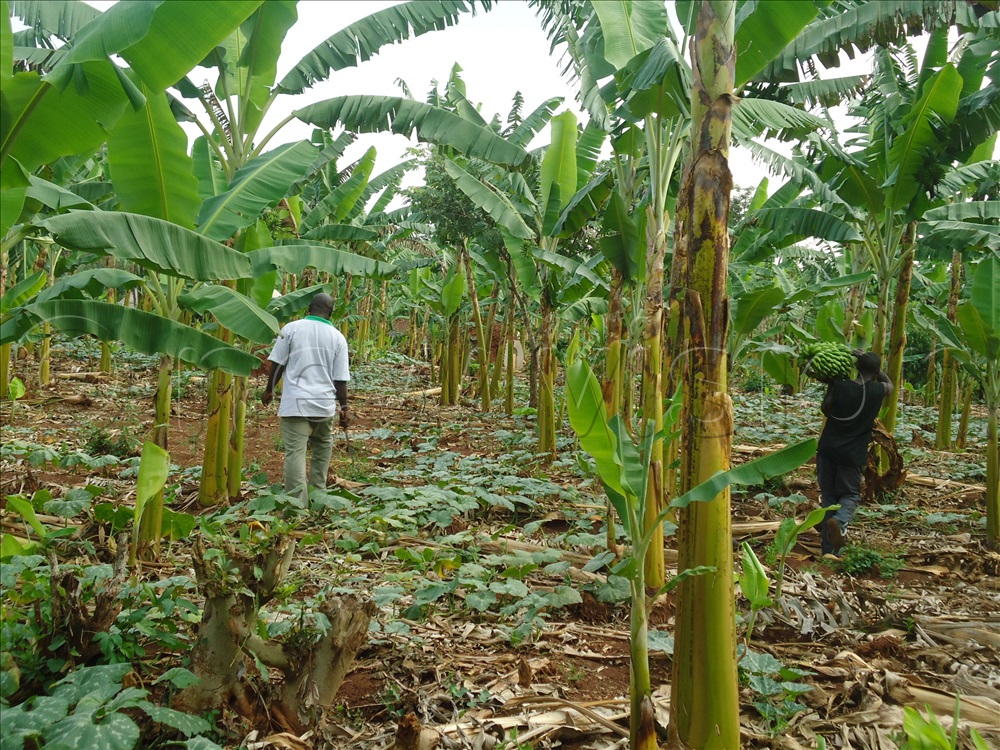The hot and dry seasons present significant challenges to farmers, and many regions face extended periods of drought.
Across the country, prolonged droughts are pushing farmers to the brink, leaving once-thriving crops withered and fields parched.
For Sam Kasule, a matooke farmer from Kasana village, Semuto town council in Nakaseke district, and Wilson Nkurunziza, a coffee and turkey farmer from Lwensama village in Mubende, the scorching sun has turned their farms into dust-laden landscapes of struggle.
Kasule, whose banana plantations are his main source of income, watches helplessly as the relentless heat takes its toll. Even his backup plan cassava has not been spared.
“This year’s dry season is unbearable. My crops are drying up right before my eyes, and it’s heartbreaking,” he says.
Nkurunziza faces a similar nightmare. His coffee trees, once flourishing, now struggle against the blistering sun, and even his turkeys suffer under the harsh conditions.
“Keeping moisture in the soil is a daily challenge. The weather is unpredictable, and we must find ways to adapt,” he explains.
With farmers across Uganda feeling the impact, the question remains, how will they withstand the unforgiving climate, and what solutions can help them secure their harvests?
In these times of severe heat, it becomes crucial for farmers to adapt and find innovative ways to safeguard their crops.
Gidoen Zakke, an agronomist says the importance of maintaining soil fertility to combat harsh weather conditions.

“One of the most important things farmers can do is ensure the soil is fertile and retains moisture. During hot and dry periods, the soil tends to lose moisture faster, so applying organic matter like compost or mulch helps to keep the soil cool and moist, preventing crops from suffering,” said Zakke.
Seperanza Kenyena from Isingiro district has adopted unique techniques to protect her banana plantation during dry spells.
“I make sure to cover my banana trees with natural materials like grass and Napier grass. This provides shade, reduces evaporation, and keeps the plants cooler. I also ensure that I prepare my land before the dry season arrives by improving the soil with organic fertilisers,” Kenyena explains.
The preparation for the dry season begins well before the weather turns hot. Farmers need to plan ahead, adopting practices that will sustain crops when the rains are scarce.
One of the most effective ways to mitigate the effects of hot weather is to incorporate water conservation techniques. Farmers can install irrigation systems, although this can be expensive for some.
However, simple techniques such as using mulching, which involves covering the soil around the plants with organic materials like leaves or straw, can help reduce moisture loss and protect crops from the sun’s harsh rays.
Ronald Lotet, a senior environment officer in Mubende, offers additional insights into how farmers can be proactive during the hot season.
“Water is key during the dry months, so it’s important for farmers to harvest rainwater when possible. Building water storage systems such as rainwater harvesting tanks can provide an alternative water source during drought periods. Farmers should also consider practicing agroforestry by planting trees around their crops to provide shade and reduce the impact of wind and sun exposure.”
Agroforestry, which combines trees with crops, is an excellent way of protecting crops from the harsh elements of hot weather. Trees act as windbreaks, which reduce the drying effect of hot winds, and their shade helps to lower temperatures around crops, providing a cooler environment that can improve crop resilience, Lotet says.
He says proper irrigation methods also play a significant role in crop protection during dry spells. Drip irrigation, for instance, is a more efficient way of watering crops, as it delivers water directly to the roots, ensuring the crops get enough moisture without wasting water.
However, for farmers who cannot afford such systems, there are other less expensive alternatives such as using water cans or manual watering techniques, though they may be more labor-intensive.
Another essential aspect of protecting crops during hot weather is monitoring the plants for signs of stress.
“Farmers need to closely monitor their crops for signs of dehydration and take action immediately. Wilted leaves, dry edges, and yellowing are some common indicators of water stress in crops. Timely intervention such as watering or adding more mulch can help the crops recover and thrive,” said Zakke.
Farmers should also practice crop rotation to avoid depleting the soil’s nutrients, which can become even more problematic during the dry season.
Growing different crops each season helps maintain soil fertility and reduces the risk of pests and diseases, which can become more prevalent during dry spells when crops are stressed.






3 comments
This is an excellent post that I will be bookmarking for future reference. Your detailed explanations and clear examples have helped clarify several key concepts. I appreciate the time and effort you’ve put into making this content so valuable.
I’m so glad I found this post! Your insights are incredibly valuable, and I love how you’ve approached the topic from multiple angles. You’ve provided a clear and comprehensive overview while still diving into the more nuanced aspects of the subject, which is something I really appreciate.
Good afternoon, Mitchell
Thank you for always visiting the website. We promise to continue providing our audience with educative content.